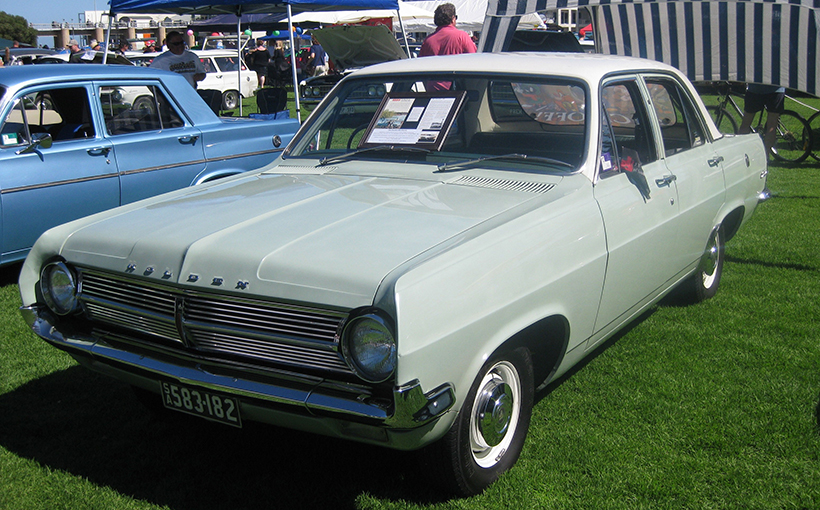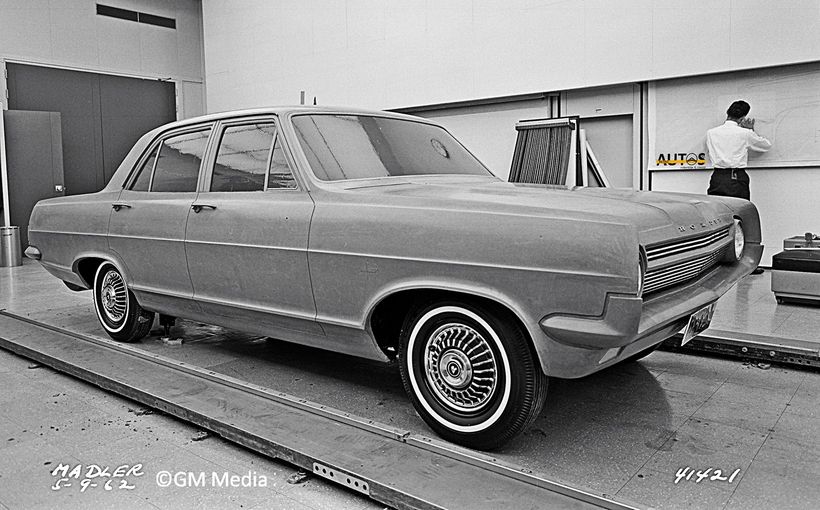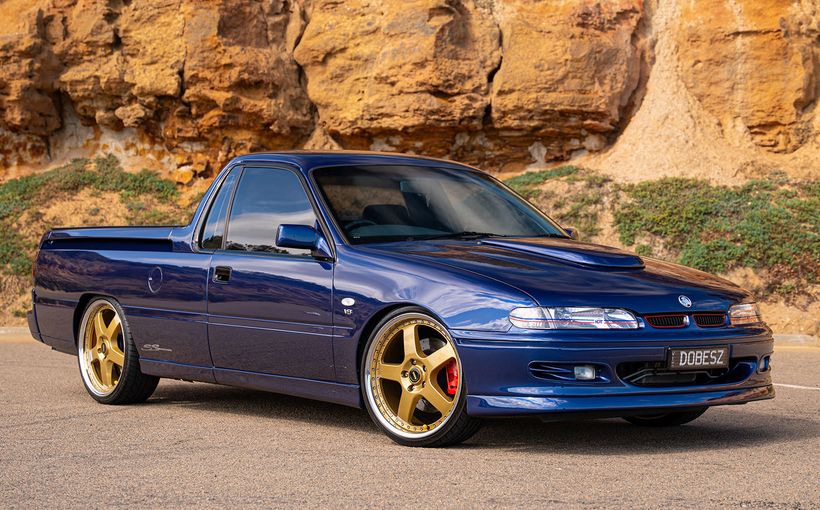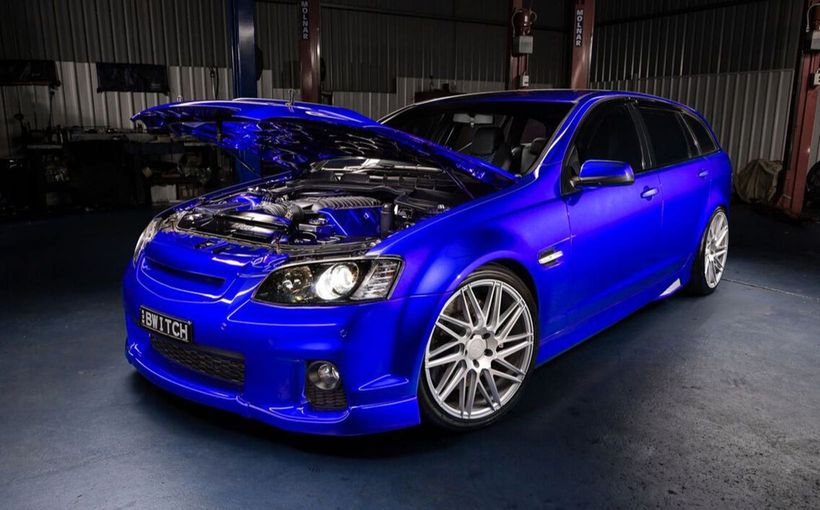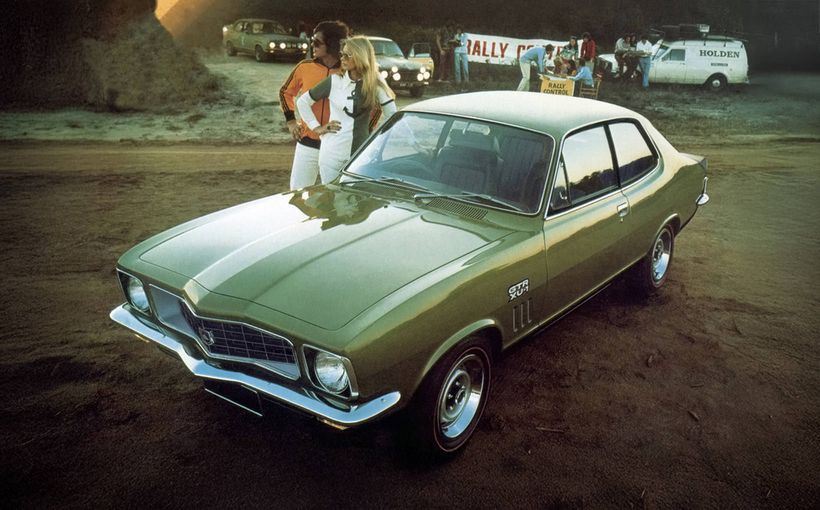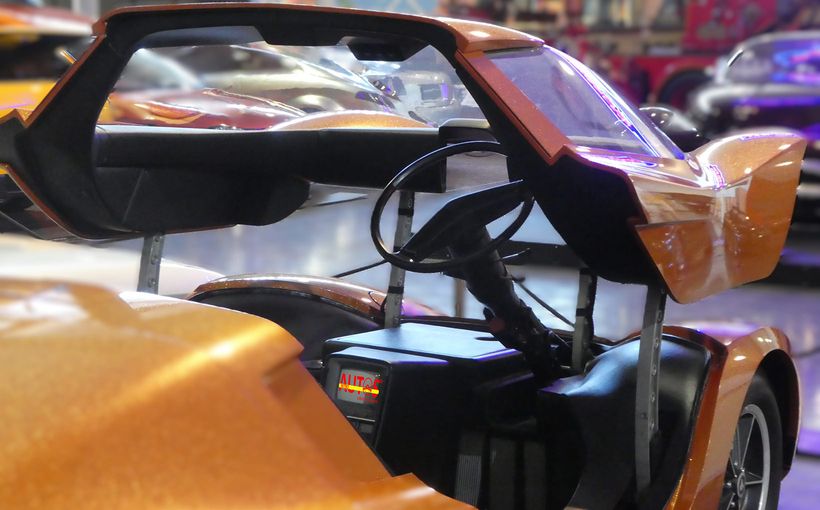1965-67 Holden HD/HR X2: Two Many Carbs

The Holden HD was a brutal reminder of what it cost Holden after Detroit was forced to intervene and re-work the EJ and EH then replace the local EF proposal with the HD. As a futuristic design from a GM experimental studio in Detroit, the HD launched in February 1965 had the right pedigree until Holden attempts to anticipate local market sensitivities were overruled. Buyer reaction then prompted an early local HR facelift. The X2 engine option suffered by association with what many regard as the worst Holden ever.
Far worse than the sales it cost Holden, the HD proved that loyalty to Holden was product-driven and not a given. The HD wrong turn and its X2 engine ill-suited to the average Holden buyer emboldened rivals.
The HD’s sales of 178,927 units may have been the envy of Ford and Chrysler but were a disaster for an all new body compared to the 256,959 for the EH and 252,352 for the HR, both facelifts. The HD sales tally does not tell the story of the initial sales spurt that followed the EH’s long 1963-65 model life then a collapse as HD shortfalls were revealed. The best thing to come out of the HD was the HR, and the end to Holden complacency.
Was the HD a bad car?
The answer has to be yes, but it could have been much worse.
Barely 11 years after Holden was given the mandate to build the only compact family car specific to Australian needs, four direct rivals from Detroit were on the horizon by 1959. By 1964, a rapidly-improving local Falcon and Valiant could not be ignored. For growing families, a Studebaker Lark Cruiser, compact Fairlane and a comprehensive Rambler range were now accessible enough locally to eat into Holden sales.
The EH’s important new 149/2.4-litre and 179/2.9-litre engines were relegated to the smallest and least powerful in class within a year of release. The XM Falcon could be ordered with a 170/2.8 Pursuit or 200/3.3 Super Pursuit and the Valiant’s base engine was the 225/3.7 slant six. It didn’t help that Holden’s 2.4-litre starting point was closer to the old school Austin Freeway.
Although horsepower was important, engine flexibility, fuel economy and low maintenance were still big priorities. Holden’s get out of jail card for 1963-64 was the trim size and balanced lines of the milestone EH that suited the new engines. But the EH was a small car, just 1727mm wide on a 2667mm wheelbase with a big transmission tunnel carving up the cabin. As the baby-boomers grew taller and bigger-framed than any previous generation, Holden had to match or better the extra cabin and boot space and the longer wheelbases of the Falcon and Valiant.
The Detroit solution was a reminder that Australians were not yet in charge of their destiny.

A young Leo Pruneau, a decade before he became Holden’s own chief designer, was the assistant chief designer for the GM Advanced Studio that defined the HD’s new shape. He remembers the HD brief well. It had to accommodate three full-size adults across the front and rear seats while maintaining up to nine inches/229mm of ground clearance on the same skinny track and short wheelbase of the EH.
The only way to achieve this was to go up and out but there was a limit to how tall Holden could make the body. The solution was to raise the body relative to the floor, so the floor could be flattened to reduce the transmission tunnel and side sills. This maximized foot and head space for six occupants while limiting the increase in height to just one inch. Given that the EH was already looking unfashionably tall for the era, that inch was still an inch too far.
Although an extra inch could be squeezed into the HD wheelbase without changing anything structurally, the seats still had to position the occupants at a fairly upright angle to deliver the required gains in legroom and boot space. To make room for bigger centre passengers front and rear, width had to grow by a full two inches (51mm) even though the EH’s already narrow track stayed the same.
The dodgy change was moving the engine forward by no less than three inches (76.2mm). This not only moved the transmission forward to further reduce centre tunnel height, it also created more legroom at the firewall. Weight distribution deteriorated in a car already under fire for its unbalanced handling and braking.
The EH’s square rear quarter panels had already delivered an increase in boot space but by 1965, the new benchmark was the Valiant’s 26 cubic feet (which the HD exceeded at 26.4). Holden’s 43 litre fuel tank was overdue for a boost of a full two gallons (9 litres) and the spare wheel was to be stored vertically in the driver’s side rear corner of the boot so it could be accessed without disturbing the luggage.
To accommodate this, the HD’s rear panels had to be deeper and longer. Although wheelbase was only boosted by one inch, its length increased by three inches (76.2mm), most of it behind the rear wheels.
Cloaking this so it still presented as a sleek new Holden was no mean feat.

GM’s Pioneering New Look
Leo Pruneau explains the dramatic new look that was applied to the HD ahead of most mainstream models in the GM world. It disguised what had been done to the EH with such success that the true cost of the HD’s extra space was not noticed until the car had left the showrooms:
“One way to make a car look good is to have a roof that is nowhere near as wide as the belt line, but you reach a point where you hit your head on the side glass as it slopes into the narrow roof.
“Straight side glass dictates straight side styling, as the glass has to wind down inside the door. A curved door can be made to accept straight glass, but it requires a straight section on the inside for the glass; which reduces interior space.
“I did numerous drawings showing how curved side glass that simply winds into a door with the same curve could free up all this extra space inside.”
This feature on its own delivered an extra five inches (127mm) of shoulder room from an overall width increase of three inches (76.2mm) in the HD.
Pruneau’s Advanced Studio usually defined the centre section of a new vehicle design then the various studios for each GM brand would define how the production car would look beyond the A- and C-pillars. At the same time the HD was being defined, Chevrolet picked up the same new look for its full-size 1965 model but also incorporated GM’s new signature “coke-bottle” hip line into the new design.

Holden held this new hip line over for a relatively simple facelift of the HD. Imagine the HK sharing the same dimensions as the HD originally intended for an early 1967 release. The HK was intended to be the natural progression from the HD, not the HR.
This also explains why Holden was locked into developing its own small V8 for the HD engine bay instead of picking-up the Chevrolet small-block (the new Holden V8 effectively became redundant before it was even released after the HK had to be held back from its 1967 release so it could be expanded in every dimension to match the XR Falcon after which the Chevrolet V8 slotted in nicely) .
Another ground-breaking feature that emerged from this studio was the flush tail lights that followed the contours of the body, a feature that the HD shared with Pruneau’s HB Viva and the HK. Again, the HR was not part of this sequence.
In the case of the HD, the entire car was designed by the Advanced Studio and this is where it went pear-shaped for Holden. Pruneau recalls that the final clay was prepared in consultation with a team from Holden, including Holden’s long suffering body engineer Reg Hall.
Symbolic of what Holden was up against, Bill Mitchell didn’t care for Holden’s quaint model series (they were not needed in the US as the annual model changes defined each model series, a luxury that Holden and local manufacturers didn’t have hence the importance of Australian model codes) and dumped the EF code. He was eventually forced to settle on the reverse of David Hegland’s initials, Holden’s Managing Director.
The HD should have looked as frumpy and snub-nosed as an Austin 1800 with a longer tail as they shared the same wheelbase. Apart from the extra shoulder room they generated, the curved-sides broke up what was an unusually tall and slabby body section between the sills and side glass. Just how deep was exposed by the amount of sheet metal between the top of the front wheels and the front guards.
Where the EH bodyside crease line rested on the top of the front wheel arch, the HD’s was significantly above the wheel arch yet these lines on both cars ended at almost the same level relative to the headlights. It was an indication of how much the HD body had been raised relative to the floor and suspension. For Holden not to anticipate what this would do to the handling before the EH’s narrow track and the HD’s extra weight and engine shift were factored in beggars belief.
The way Pruneau’s studio hid this extra height in the front was masterful. Just as PininFarina had used a droop at the rear of the first Austin 1800 to hide its deep sides, the HD’s high bonnet had a front section that sloped gently down into the grille. There was also a deep panel below the front bumper, eliminated on an increasing number of 1965 models.

These two devices created the illusion that the HD grille was at least as sleek as the EH except the frontal area above and below had increased. At the time, Holden talked this down to an increase of less than two square feet/0.19 square metres, still significant at a time when the HD needed to have at least two square feet less frontal area than its upright predecessor. The results would become obvious at the petrol bowser and stop watch, along with the big increase in weight.
Similar styling devices were used at the rear with a clever horizontal section that was an extension of the tail lights. Along with the gentle slope on the boot lid and wagon’s tail gate that replicated the bonnet slope, the extra body depth was also hidden at the rear.
The way the shift in engine position was disguised was really sneaky. Compare the EH’s wheel arch shape with the HD’s. From square-on, the trailing edges of the EH wheel arches sweep outwards and rearwards. The HD’s sweep inwards and forwards. This created the illusion that the HD wheelbase has been increased in proportion with the extra length as the amount of metal between the front door and front wheel arch looked the same or even longer.
Because the HD wheel arches were also curved inwards towards the wheels, the narrow track looked as though it was meant to be there.
There were two undesirable consequences. The same wheelarch shape at the rear made the rear overhang look excessive except the extra overhang was needed to slim down the HD’s bulky centre section by allowing a mild slope in the rear guards. For the HD not to end-up looking like an Austin 1800 at the front, this extra length and slope had to be replicated front and rear but there was not enough front overhang to resolve this.
Leo Pruneau recalls that GM head of design Bill Mitchell personally insisted that the front guards were extended. He was absolutely correct in identifying the need to create some “fake” length to balance the extra visual length at the rear and to stop the new car from looking high and stumpy (which it was). These “kidney-slicers” as they were soon called in Australia were also used on the first Oldsmobile Toronado to disguise its tall and short front drive powertrain.
The Holden team working with the Americans were not happy at all about this solution as they knew that buyers back home would see them as fake and a safety hazard. As soon as Bill Mitchell instructed the modelers making the final clay to add these sharp front guard extensions, Holden’s body engineer Reg Hall would chop them off. The following day Bill Mitchell would explode and insist on them being returned. And so it would go on.
Sensing an altercation, the design staff took Reg Hall out fishing for a day while the HD clay was packaged according to Bill Mitchell’s wishes and dispatched to Australia. They fully expected Reg Hall to cut them off as his team tooled-up for the new model back in Australia.

After the HD went on sale exactly as Bill Mitchell wanted, the US designers were surprised. Reg Hall wasn’t silly. Without those extensions, the HD would have looked wrong as there was not enough front overhang beneath the HD bumper to balance the rear. The loss in front guard slope and the cut in length above the front bumper would have left the HD looking snub-nosed. As the HR later demonstrated, it took more than a body engineer with a saw to rectify this.
Although Holden used the Oldsmobile Toronado and rival Lincoln Continental to validate the HD’s “kidney-slicers” as the latest and greatest from the US in its sales training material, they could never work on the HD when the bonnet and scuttle were so high.
If nothing else, it highlighted the need for the local design studio about to come on stream. In fact, the HD created the new studio’s first major project: the HR facelift.
Meanwhile, there were other issues to address.

The 179 X2
Adding an extra carburetor or “jug” to a Holden engine for extra grunt had been a common aftermarket practice since the first Holden arrived in 1948. For the factory to go down this track without parallel developments in suspension, transmission and brakes, it could only be seen as a desperate move, which it was.
The real problem was that the 179’s 115bhp/86kW looked a little too low against the Falcon 200’s 121bhp/90kW and the Valiant’s 145bhp/108kW. Holden had already experimented with a twin-carburettor 179 for an abandoned EH race special, a much better setting for a peakier engine.
To beat Ford and almost match Valiant bragging rights, dusting off this engine as the X2 option for an instant 140 bhp/104kW seemed a clever thing to do. It looked as though it had been engineered properly with a higher lift camshaft that “increased valve overlap and lengthened intake and exhaust segments” and a twin branch exhaust system with separate pipes from the twin exhaust headers to the engine side of the muffler. Engine bearings were uprated and the carburetors were the stock Bendix-Stromberg downdraught type similar to that fitted to the 149.

The X2 bonus was Holden’s first set of auxiliary gauges including water temperature, ammeter and oil pressure but no tacho. This omission compounded the compromises.
Although claimed X2 power went up from 115bhp/86kW to 140 bhp/104kW, the power peak also went up from 4000 to 4600rpm. Torque grew ever so slightly from 175 lb ft/236Nm to 178/240Nm except the peak went from 1600 to 2200rpm, a big shift for Aussie drivers who had been conditioned to get their Holden into top gear and leave it there.
The X2 upgrades should have made it more fun to drive except the HD’s three speed manual gearbox had no synchro on first (to engage first gear you had to stop) leaving only two gears when you were on the move.
For the HD, Holden also swapped the old three-speed Hydramatic for the two-speed Powerglide at a time when its rivals were switching in the other direction. The new auto may have cut 13 lbs/6kg from the HD’s weight but it was not a happy marriage with the X2. The upward shift in power and torque peaks left a bigger hole between ratios with both transmissions.
As conservative X2 drivers sat with their pedal to the metal waiting for their engines to climb out of the hole between the two ratios, the X2’s extra carburetor would pour more fuel down the exhaust for a big boost in fuel consumption.
In an attempt to cover the X2’s loss of flexibility and allow it to get on the cam at lower speeds, Holden specified the EH auto’s short 3.55:1 rear axle ratio for the manual but that also meant it was working harder, more of the time. To compensate for the loss of a ratio at the top end, the Powerglide was given the taller 3.36 final drive of the previous EH manuals, but this required more torque-converter slip with increased fuel consumption to cover the loss of a ratio at lower speeds
These final drive changes were also undermined by the HD’s weight increase, a full 135lbs/60kg at HD Special level and an average of 150lbs/67.5kg for the HD Wagon. As a percentage, the rise from the 2468lb/1120kg EH to the 2603lb/1182kg of the HD was significant given that the suspension had not changed.
The X2 could only strut its stuff if driven by a driver capable of double de-clutching into first then revving the engine until the hydraulic lifters floated and lost the plot in the absence of a tacho. Despite claims that it was Holden’s first 100mph model, it never quite reached the ton, falling short by 3mph/5km/h. A standing quarter average of 18.9 seconds by 1965 was slower than a good EH 179. Only the feather-footed could better a 20mpg/14L/100km average.
Although Ford’s 200/3.3-litre alternative was 19bhp/14kW down on power compared to the X2, its peak power arrived 200rpm earlier. Even if the Ford’s better torque figure of 185 lb ft/250Nm arrived at a higher 2400 rpm, the extra ratio in the XP Falcon’s new Borg-Warner auto was more useful to more Australian buyers than the X2’s extra carburettor.
Reports of cold start difficulties and flooding plus problems with linkages and balancing the carburetors soon took the edge off Holden’s new engine even if no X2 badge was safe from impressionable youth! The different lengths and angles of the twin branch exhaust could also create problems under duress, either blowing flange gaskets at the twin branch manifolds or snapping the pipes altogether.
The recurring question in road tests at the time was why it was not given the transmissions, brakes and handling to match the extra power. Holden responded by instructing dealers not to sell the X2 as a performance choice but primarily for towing caravans. The response was then “why isn’t the maximum torque developed lower down, where it’s most needed for this operation?”
The bottom line, as can be revealed for the first time here, was that it did not generate any useful increase in power or torque despite Holden’s exhaustive attempts to solve fuel distribution and mixture problems that the extra carburettor created. As Dave Bennett from Perfectune later demonstrated with his renowned changeover cylinder heads, the red engine needed considerable head work to take advantage of the X2 upgrades.
Yet the X2’s 140bhp power claim was an essential advertising tool to maintain Holden credibility before anyone even optioned it. It proved better at using more fuel.
There were more serious problems that affected all HD Holdens. The Holden that could once do no wrong was under siege on almost every front. Although the HD didn’t meet the nine inch/229mm ground clearance specified, it came close.
This left a higher, longer, wider and heavier body hovering over the standard EH front and rear narrow track. With so much body work hanging outside the previous narrow track along with the extra rear overhang, it could now exert extra leverage over the suspension with only a slight change in direction.
Much was made of Holden’s new method of attaching the HD’s rear axle to the leaf springs with plates instead of U-bolts for extra security and refinement but the stock sedan’s four leaf rear springs faced with the combination of all the above, left the HD with a chronic rear steer problem.
It could be felt as soon as you drove out of the showroom, especially by rear seat passengers. Accessing what there was of the X2’s extra grunt compounded the wayward rear so badly that the wagon with its extra leaf in each rear spring was often given to testers. As Holden understeer increased from moving the engine forward, drivers also had to allow for a rear axle that now had a mind of its own. The resulting criticism was unprecedented for a Holden.
Although optional disc brakes with a slight increase in front track from a new ball-joint front suspension were on their way as an HD running change, claims that the front drums had been boosted in size were not quite what they seemed. Front and rear drums remained the same 9 inch/229mm diameter as the EH but the front shoes had been widened to support a claim of a 30 per cent increase in swept area. Lining compound and cooling (lack of) remained the same as before.
Buried in the fine print was the news that the engine’s forward migration had generated a front to rear braking ratio of 63:37 compared to 60:40 for the EH. Any improvement in braking performance was therefore absorbed by the extra work dictated by the HD’s extra weight over the front wheels, the weight transfer also adding to the self-steering rear end under brakes. Both outcomes became painfully obvious during testing or ownership.
The sooner Holden could replace the HD the better – in the process, one of the most stylish and modern-looking Australian cars for its time was forever tainted. Although a set of wider wheels, stiffer suspension and lowered ride height could tame some of its worst habits, wide wheels and a drop in ride height tended to highlight the depth of the HD’s body sides.
The way the HD hid these almost bizarre limitations while achieving the much bigger interior was in fact quite clever. For Holden not to boost the wheelbase and track to match the extra cabin space required was not so clever. Adding weight and overhang while ignoring the suspension and brake limitations of the EH was cynical. It was indicative of the contempt that Holden’s unrivalled sales leadership had generated.

The HR Facelift
Fixing the appearance of the HD was essential before any other changes could be treated seriously.
Undertaken by Holden’s new design studio under the leadership of former Cadillac designer Joe Schemansky, the April 1966 HR facelift altered the character of the HD with minor but highly effective changes. It restored the tough, no-nonsense look expected of a Holden by eliminating any pretence of a low-slung US model. It then became critical after 1967 to buy extra time to expand the HK in size after Holden was caught offguard by the XR Falcon.
A slight increase in length over the HD confirms that the “kidney slicers” were not simply cut off. They were reworked with square edges to match the overhang of the panel beneath the bumper. Because there was almost no reduction in side-on visual length to balance the rear, where did the “kidney slicers” go?

Take another look at the length of the front guard edges still left exposed ahead of each headlight and the depth of the hexagonal headlight recesses. The HR’s recessed grille-mounted indicators and the depth of the HR grille’s centre bar are further clues. The extremities of the front bumpers also have a raised trailing edge to provide extra clearance for the forward positioning of the headlights and their new surrounds.
At the rear, die-cast tail light mounting sections were added to the HD rear quarters to allow vertical Cadillac-style tail lights, reflecting Schemansky’s past. From side-on, they were shaped to match the re-worked front guards. Although the new lighting arrangements made the HR harder to see at night and the front indicators/parking lights no longer marked the extremities, consolidating everything in the grille took the eye away from what was still a triple-storey front.

The only big change was moving the C-pillar to the extremities of the lower panels for a bigger rear screen. The Special’s new waist level strip and extra strip at the base of the side windows and C-pillar then made the HR look much sleeker.
Much was made of changes to the track and suspension but it involved little more than dropping the ride height by half an inch/12.7mm with slightly firmer settings and fitting lower profile tyres. The track increase was generated by a change in wheel offset by 0.4 inch/10mm. While this was enough to generate an improvement in stability, the verdict was that “the axle tramp was still present with the larger engines, there was still understeer in quantity and the steering was still excessively heavy at low speeds.”

Unless the optional front disc brakes were ordered, the standard brakes with 124 sq in/800 cm sq swept area versus the XP Falcon’s 131/845 and the Valiant’s 153.5/990 were a cause for concern after all engines were significantly upgraded. It is noteworthy that Ford specified brakes with a 157.2/1014 swept area for the Falcon wagon, something that Holden needed to match as the HR wagon was still significantly heavier than the sedan.
As long as Australian roads remained as bad as they were and the HR sailed over them without drama while looking like a true Holden, all could still be forgiven.

The HR’s 186 X2 Engine
The short story is that the X2 after the increase in capacity from 179/2993cc to 186/3047cc (and the parallel increase in compression ratio from 8.8:1 to 9.2:1) gained an automatic boost in power to 145bhp/108kW at 4600rpm while torque grew to 184 lb ft/248Nm at 2200rpm. Apart from improved twin carburettor linkages and a switch from a forged steel crankshaft to a nodular iron crank across the range in mid-1967, that was the extent of it.

The longer story is that the three speed manual without synchromesh on first and the two-speed Powerglide automatic were still there. And Holden engineers still struggled to get the X2’s extra carburettor to work, hence the claimed increase of only 5bhp/3.7kW, not the 14bhp/10kW and 11bhp/8.2kW boosts of the single-carburettor engines.
More importantly, that left the HR’s new stock single-carburettor 186 to achieve what the X2 couldn’t. The stock 186’s lift in capacity and compression ratio boosted torque to 181 lb ft/244Nm at 1600rpm, which was not only better than the 179 X2’s but much more accessible given the ongoing limitations of both transmissions.
The stock 186 restored the low speed flexibility that the heavier HD/HR bodyshell had lost compared to the EH. On paper, its 126bhp/94kW was better than Ford’s 200/3.3-litre and torque was only slightly worse. Its fuel economy was a full 25 per cent better than the HD’s 179 X2 and good enough for Valiant owners to question whether they really needed their car’s bigger and thirstier engine.
If there was a legend that emerged from the flawed HD/HR series, it was the stock 186 engine, not the X2.

This left the 186 X2 between a rock and a hard place. As a two speed auto it still couldn’t crack the ton/160km/h and its standing quarter time was only slightly better than the much improved entry HR with its 161/2638cc and three speed manual.
As a manual, the 186 X2 could post better figures than both the HR’s single carburettor engines and it was faster than both the Falcon’s 200/3.3-litre and the Valiant’s 225/3.7-litre thanks largely to its boost in compression ratio and freer-flowing exhaust. Yet it was still thirsty and not much fun to drive as your knuckles collided with the dash top if you tackled the stiff column shift with any gusto.
For a bigger boost in performance with similar fuel consumption, the new Valiant V8 had already entered the equation but only at top shelf level. Within months of the HR’s arrival, the XR Falcon was offering a 289/4.7-litre V8 option across the range, again with a big boost in performance with similar fuel consumption. It was no contest, especially as the HR’s heavy understeer and axle tramp were still issues.

The twin-carburettor X2 with its extra tuning and fussy cold weather starting still didn’t make much sense. It still didn’t have good enough transmissions, rear axle control (despite the HR’s welcome LSD option) and handling to be a driver’s choice. As a more powerful and flexible luxury choice that could maintain six cylinder fuel economy, new rival V8s further confirmed that it was a failure.
Yet after the new 186 was re-engineered as the single twin-throat carburettor 186S in mid-1967 and the first Holden with an automatic choke, it actually delivered the claimed X2 power increases. The auto version provided a practical alternative for those who didn’t need or want a V8. Combined with the optional Opel four-speed manual, the 186S instantly became an engine and transmission combination for the driver that Ford or Chrysler could not match at six cylinder level.
The HD’s failings dragged Holden kicking and screaming into the 1960s. Not only was Holden forced to inject some real substance into the HR after release including a long list of extra safety features, a popular new premium six cylinder engine and four speed manual option, it was forced to redesign the HK. But that’s another story.

Watch this Holden HR Special Commercial here: http://aso.gov.au/titles/ads/holdens-got-more-horses/clip1/
This Holden HR Special with its X2 badge behind the front wheel arches was a rare sight. Holden was obviously now more confident of the HR’s stance but it was still loaded down in the rear in some of the shots. Note the driver holding it in second gear and the judicious cutting of the corners to avoid any semblance of body roll.
Watch this Holden HR Special Wagon Commercial: http://aso.gov.au/titles/ads/holden-saturday-kind-of-car/clip1/
How many paperboys would have wanted a bike like that in the 1960s! This is probably the most honest of all the ads as the HD/HR Station Sedans as Holden called them really were a Saturday Kind of Car providing no one was in a hurry and there were kids and stuff to shift. Yet the non-standard white walls were essential to disguise just how tiny the standard skinny 13 inch wheels were.
Protect your Holden. Call Shannons Insurance on 13 46 46 to get a quote today.

